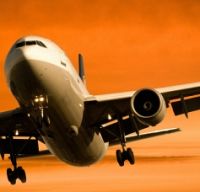

A bioelectric hybrid plane, Beha, is currently in development by UK startup Faradair.
The 18-seater bioelectric hybrid plane will use electric motors to power take-off and landing, which is known to be the highest emission time in any flight for both noise and carbon emissions. Once the plane is going at around 230mph the plane will switch to its turbogenerator, powered by biofuel, and begin to recharge with some help from solar panels. Faradair chief executive Neil Cloughley commented:
"All electric wasn't going to be possible straight off the bat. The power density simply isn't there for anything of any meaningful size. That means that we have to go hybrid; it means that sustainable aviation fuels [SAFs] will be the ideal."
The hybrid technology will also make the plane accessible, where not all airports are able to install expensive electrical or hydrogen recharge facilities. Without even changing the design of the aircraft the amount of flight time spent on electric should also lengthen as battery technologies improve without having to even change the plane itself. The designer of the plane has said they hope the plane will be carbon neutral by the end of development.
The plane is designed to be versatile and able to be used for cargo, passenger and special operation flights. The interior of the plane will be designed in such a way that it can be converted for use between passenger and cargo in 15 minutes.
It is hoped that 300 of the planes will be produced by 2030, and Neil Cloughley hopes they will sell on low emissions, minimal operating costs and versatility. He commented that they may not be "the sleekest, the sexiest, nor the fastest, the highest or the furthest flying aircraft" but feels that isn't the main aim.
The plane could be a huge success with airports like London City which have noise-related night-time flight bans.
By 2026, Faradair hopes to have the Beha flying passengers.